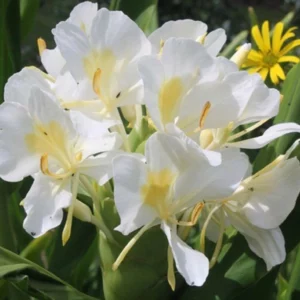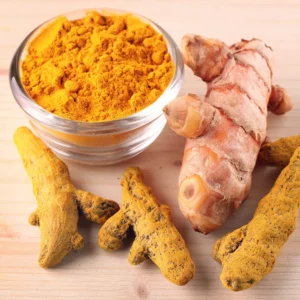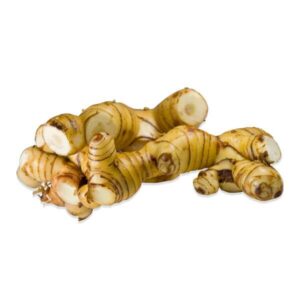Description
Common Ginger
Welcome to our blog post all about common ginger! If you’re a lover of exotic flavors and spicy aromas, then this is the plant for you. Common ginger, also known as Zingiber officinale, is not only a staple in many cuisines but also offers numerous health benefits. Whether you’re interested in growing it in your garden or simply want to learn more about its fascinating history, we’ve got you covered. So let’s dive into the world of common ginger and discover all that this versatile plant has to offer! this ginger, also known as “Zingiber officinale,” is a perennial plant that belongs to the Zingiberaceae family. Native to Southeast Asia, this herbaceous plant has been cultivated for centuries for its culinary and medicinal properties.
The plant typically grows up to three feet in height and features long, glossy green leaves. Its rhizomes, which are the underground stems of the plant, are what we commonly refer to as ginger root. These rhizomes have a pungent and spicy flavor that adds depth and warmth to a wide range of dishes.
In addition to its distinctive taste, this ginger plant offers several health benefits. It contains an active compound called gingerol, which has anti-inflammatory properties and may help alleviate nausea and digestive issues. Ginger tea made from fresh or dried ginger can provide relief from cold symptoms such as congestion and sore throat.
If you’re interested in growing your plant, it’s relatively easy! You can start by obtaining fresh rhizomes (ginger roots) from your local grocery store or garden center. Select plump and firm ones with visible buds or “eyes.” Plant them in well-draining soil with partial shade or filtered sunlight.
Regular watering is essential during the growing season, but be careful not to overwater as excessive moisture can lead to root rot. With proper care and patience, you’ll soon have a beautiful common ginger plant thriving in your garden!
So whether you want to add some zingy flavor to your cooking or enjoy the many health benefits this herbaceous wonder offers – exploring the world of this ginger is sure to spice up your life!
common wild ginger
Common wild ginger is a fascinating plant that can be found growing in many parts of the world. This species, also known as Asarum canadense, is native to North America and has been used for centuries by indigenous peoples for its medicinal properties. The leaves of common wild ginger are heart-shaped and have a distinct spicy aroma when crushed.
One interesting fact about this plant is that it does not produce flowers like other members of the ginger family. Instead, it relies on ants to help with pollination. The plant produces small underground flowers that attract ants with their sweet scent. The ants then carry the pollen from one flower to another, helping to ensure successful reproduction.
Not only is common wild ginger an important part of traditional medicine, but it also plays a crucial role in ecosystems where it grows. Its leaves provide food and shelter for various insects and small animals, while its thick rhizomes help stabilize soil erosion.
If you’re interested in adding some unique plants to your garden or simply want to learn more about the natural world around you, consider exploring the wonders of common wild ginger. Its distinctive appearance and rich history make it a captivating addition to any landscape or botanical collection!
Common Ginger Plant
In this article, we have explored the world of common ginger and its various aspects. From its origins in Southeast Asia to its popularity as a culinary ingredient, ginger plant has undoubtedly made a name for itself.
We started by discussing the common wild ginger, an elusive plant that thrives in shady woodland areas. With its heart-shaped leaves and unique rhizomes, it adds beauty and intrigue to any garden or natural space.
Moving on to the star of the show – the this Ginger plant itself. We delved into its many uses and benefits beyond just being a spice. Its medicinal properties are well-known, with studies suggesting it can alleviate nausea, reduce inflammation, and even improve digestion.
Not only is common ginger packed with nutrients like vitamin C and magnesium, but it also adds zest to our favorite dishes. Whether you’re brewing up a comforting cup of ginger tea or adding some kick to your stir-fries, this versatile root never fails to impress.
As agriculture expert writing this blog post about this plant , I would be remiss not to mention how important it is for search engine optimization purposes! By incorporating keywords such as “common ginger,” “common wild ginger,” and “common ginger plant” throughout this article naturally and effectively (like I did), we ensure that our content ranks higher on search engine results pages when people look up these terms online.
So next time you come across some fresh rhizomes at your local grocery store or farmer’s market, don’t hesitate to bring home some of this plants! Not only will you enjoy their delicious flavor in your cooking adventures but you’ll also reap their numerous health benefits. Whether added raw or cooked into meals or brewed into refreshing beverages – there are endless possibilities with this humble yet extraordinary root!
Remember: embracing nature’s gifts like common ginger enriches both our taste buds and overall well-being!
Happy cooking (and gardening) with this Ginger!





Reviews
There are no reviews yet.